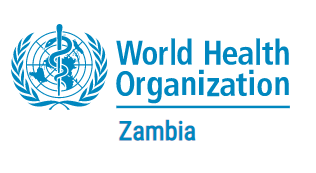Five countries in East and southern Africa are experiencing anthrax outbreaks, with more than 1100 suspected cases and 20 related deaths reported since the start of the year.
A total of 1166 suspected and 37 confirmed cases have been recorded in Kenya, Malawi, Uganda, Zambia and Zimbabwe – where the disease is endemic, with seasonal outbreaks every year – according to data reported to World Health Organization (WHO).
Of the five countries, Zambia is witnessing its largest outbreak since 2011, with nine of its 10 provinces affected. As of 20 November, Zambia had reported 684 suspected, 25 confirmed cases and four deaths. Only sporadic cases have previously been reported in animals and humans in the country.
The outbreaks are presenting varied patterns in the affected countries. In Kenya, three deaths have been reported this year compared with zero fatalities from over 200 suspected cases in 2022. While the disease is endemic in animals in Malawi, the country reported its first ever human case this year. Human anthrax cases have been reported in three districts in Uganda, with 13 deaths compared with two deaths in 2022. The high case fatality ratio is due to patients reporting late to health facilities. In Zimbabwe, human cases have been reported every year since 2019, underscoring the need for stronger preventive actions.
“To end these outbreaks we must break the cycle of infection by first preventing the disease in animals. We are supporting the ongoing national outbreak control efforts by providing expertise as well as reinforcing collaboration with partner agencies for a common approach to safeguard human and animal health,” said Dr Matshidiso Moeti, WHO Regional Director for Africa.
Anthrax is a bacterial disease that commonly affects domestic and wild herbivores. Humans acquire the disease through contact with infected animal carcasses or exposure to contaminated animal products. Animal-to-animal and human-to-human transmission of anthrax does not typically occur, although rare records of person-to-person transmission have been reported with cutaneous anthrax.
Cutaneous anthrax is the most common of the three forms of the disease. It accounts for more than 95% of human cases worldwide.
Joint multidisciplinary teams have deployed at country level to support assessments, identify gaps and take measures to strengthen the outbreak response. WHO is also working closely with the Food and Agriculture Organization of the United Nations (FAO), United Nations Environment Programme and World Organisation for Animal Health to coordinate response in the affected countries leveraging the One Health Platforms.
The outbreaks are likely being driven by multiple factors, including climatic shocks, food insecurity, low risk perception and exposure to the disease through handling the meat of infected animals.
Due to the scale of the outbreak in Zambia, shared ecosystem with neighbouring countries and frequent cross-border animal and human movement, there is heightened risk of regional spread of the disease. Control measures are being intensified. The national authorities have vaccinated more than 122 000 cattle, sheep and goats with support from FAO. Additionally more than 400 000 vaccine doses have been earmarked for 11 high-risk districts in the country’s Western province.
Public health measures are also being stepped up in Malawi including enhancing public awareness, disease surveillance, diagnosis, treatment, animal vaccination as well as proper handling of animal products and disposal of carcass. In Kenya, control measures are being implemented to halt the outbreak, while in Zimbabwe disease surveillance, among other measures, is being reinforced to ensure early detection of cases.
Human anthrax infections are recurrent in countries with frequent livestock infections, with the highest incidences recorded in Africa, the Middle East, Central and South Asia. Hospitalization is required for all human cases of anthrax. Individuals potentially exposed to anthrax spores may be provided with prophylactic treatment. Anthrax responds well to antibiotics, which need to be prescribed by a medical professional.
Distributed by APO Group on behalf of World Health Organization (WHO) – Zambia.

